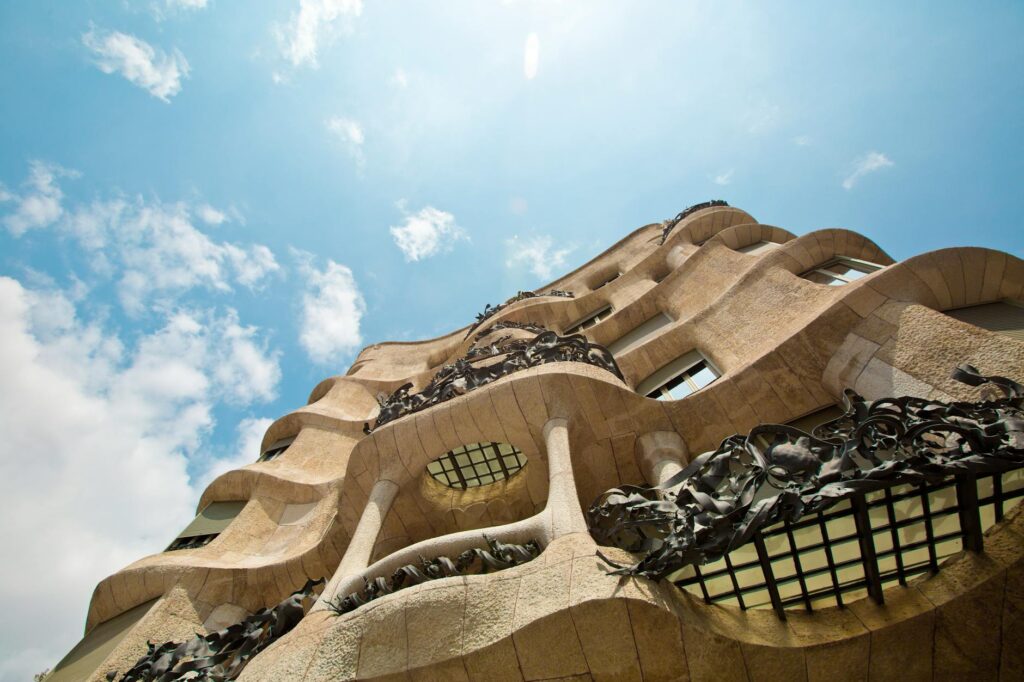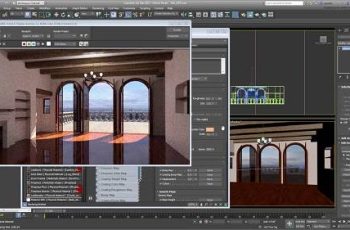Antoni Gaudí, a name synonymous with whimsical architecture and breathtaking design, left an indelible mark on Barcelona and the world. His unique style, a blend of Catalan Modernism, Art Nouveau, and personal influences, continues to inspire awe and wonder.
Gaudí’s Early Life and Influences
Born in Reus, Spain, in 1852, Gaudí’s early life was marked by a deep connection to nature and a fascination with geometric forms. His unique perspective is evident in his works, reflecting the influence of his Catalan heritage and the natural world. 
Casa Batlló: A Fairytale in Stone
One of Gaudí’s most iconic creations, Casa Batlló, resembles a fantastical dragon. Its undulating façade, bone-like columns, and vibrant colours showcase Gaudí’s mastery of organic forms. Learn more about the history of Casa Batlló.
Sagrada Família: Gaudí’s Unfinished Masterpiece
The Sagrada Família, Gaudí’s magnum opus, is a breathtaking basilica still under construction. Its intricate details, soaring spires, and symbolic imagery demonstrate Gaudí’s profound religious faith and unparalleled architectural vision. [IMAGE_2_HERE]
Park Güell: A Fairytale Garden
Park Güell, a whimsical public park, offers stunning city views and features Gaudí’s signature mosaic work and imaginative structures. Its colourful mosaics and playful designs create a truly magical atmosphere. Explore the magical world of Park Güell.
Casa Milà (La Pedrera): A Sculpted Stone Wave
Casa Milà, also known as La Pedrera, is another stunning example of Gaudí’s architectural genius. Its smooth, flowing façade resembles a sculpted stone wave, showcasing Gaudí’s unique approach to structural design. [IMAGE_3_HERE]
Gaudí’s Unique Style and Techniques
Gaudí’s style is characterized by its organic forms, vibrant colours, and intricate details. He employed innovative construction techniques and incorporated natural elements into his designs, creating structures that blend seamlessly with their surroundings. He often used trencadís, a mosaic technique that involves broken pieces of ceramic and glass.
The Legacy of Antoni Gaudí
Gaudí’s legacy extends far beyond his remarkable buildings. His innovative designs, profound artistry, and unique style continue to inspire architects and artists worldwide. His buildings have become symbols of Barcelona and a testament to the power of imagination and creativity. Discover more about Gaudí’s lasting influence.
Conclusion
Antoni Gaudí’s architectural genius has left an unforgettable mark on the world. His whimsical creations continue to inspire wonder and demonstrate the boundless possibilities of art and architecture. His dedication to his craft and unique vision have secured his place as one of history’s most important architects.
Frequently Asked Questions
What is trencadís? Trencadís is a mosaic technique using broken pieces of ceramic and glass, a common feature in Gaudí’s works.
How long did it take to build the Sagrada Família? Construction began in 1882 and is still ongoing, with completion expected sometime in the 2026-2028 timeframe.
What inspired Gaudí’s unique style? Gaudí’s style was influenced by Catalan Modernism, Art Nouveau, and his deep connection to nature and religious faith.
Are all of Gaudí’s works in Barcelona? Most of his major works are in Barcelona, but he also designed buildings elsewhere in Catalonia.
Is it possible to tour Gaudí’s buildings? Yes, guided tours and self-guided visits are available for most of his major works.

